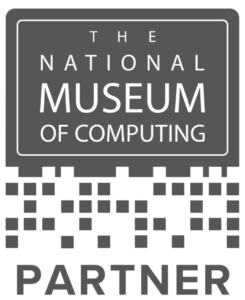Looking at the title of this blog, you are probably thinking “Isn’t it normally Golden Rules?” Well, it was renowned RAF fighter pilot Sir Douglas Bader who is credited as saying “Rules are for the obedience of fools and the guidance of wise men.” The context of this quote reflects Bader’s approach to both his military and personal life. He had a certain disdain for rigid adherence to rules when they conflicted with common sense. In some ways I have always drawn a line through Bader’s approach and the classic “adopt and adapt” long espoused as the way to use the service management framework that ITIL proposes.
One area of ITSM that I believe has been ignored are guidelines in practice (formerly process) ownership. We have seen many practices and processes managed but not owned. We are in an age where Service Integration and Management (SIAM) is becoming a widely adopted model and the need for effective practice ownership is coming into sharper focus. So with Bader’s words ringing in my ears, I’m going to offer you my Golden Guidelines for practice ownership supported by evidence I’ve gathered in the last 30 years.
1. Develop and maintain the strategic roadmap for your practice.
It can be easy to think that a practice like incident management or problem management never changes so why look at it strategically? It is true that fundamentals such as recording an incident or establishing the underlying cause of a problem will be ever present. However, the environment surrounding the process – new suppliers, changed operating models, enterprise service management, the advent of AI – can and do have a fundamental impact on it. One of the most graphic examples that my company sees every day is moving from a single supplier to a disaggregated SIAM model. Major changes in your practices are more likely than not. It follows that having the strategic roadmap for their development is going to leave you ahead of the game.
2. Design, document, and implement ITSM practices in alignment with ITSM framework guidelines.
Implementing a practice is fundamentally different from implementing a process. Why? The key difference is breadth. People, processes, working practices, partners, technology, training, communication – the list of considerations that should be addressed when implementing is broad and potentially deep. Am I telling you to follow the book? No, far from it. Use ITIL, SIAM and other bodies of knowledge as your guidance, but there is no need to follow them to the letter. My key advice would be to understand the best practices you are using and align with those that suit. Crucially, you will learn so much more by working through the rationale for not using the ‘rules’ you reject or modify.
3. Define roles, responsibilities, and accountabilities within your practice
Some argue that RACI matrices are unnecessary bureaucracy and inhibit collaboration if team members follow them too strictly. Pah! I say. When reviewing and assuring processes and value chains in your practice I would recommend a step-by-step walk through the RACI as a desktop exercise. It reveals all kinds of improvement opportunities. Typically, we see issues such as:
- Misunderstanding of the terms Responsible, Accountable, Consulted, and Informed
- Multiple accountabilities as opposed to a single point
- Input and outputs of responsibilities not clearly defined
- People or teams not consulted in time and others just not informed.
Added to this, the conflation of role profiles and job descriptions often causes issues. Role profiles are the concern of the practice manager who should ‘own’ them for their practice. They are more strategic documents that align with organisational / practice goals highlighting required competencies. Performance against the role is important for the practice manager. For example, a practice owner might conclude that, according to the KPIs, a problem analyst role seems to be working well but they do not have access to the correct knowledge articles.
Job descriptions offer a more detailed account of specific tasks and qualifications required for a job. They are essential for recruitment of individuals and performance management – for example, noting that a particular person is performing above expectations. In an IT world where organisations are demanding increasingly T-shaped people, knowing the different uses of job descriptions and role profiles is advantageous.
4. Conduct training sessions, workshops, and knowledge-sharing sessions to promote awareness and proficiency.
Having taught more than my share of ITIL and SIAM over the years I feel this area of practice ownership intensely. In my past life as an ITIL lecturer my job was to explain processes and practices in a way that sold them but primarily got the student through an exam. I taught best practice, and I could make the case for fully implementing any ITIL practice. If you want to follow up on the ‘theory’ training, though, speak to the practice owner. They should know enough about the theory but CRUCIALLY they are able to add an organisational context that I never could.
The ability to compare and contrast theory and practice is crucial in getting people bought into your unique ways of working and reduce the variability in their execution. A good practice owner should never underestimate the continual improvement opportunity from training sessions. There’s real insight to be gained from attempting to describe your practice to relative novices or newcomers, and much to be learnt from their questions and responses.
5. Provide guidance and support to IT services teams and suppliers to ensure effective implementation and adoption of your practices.
For practice owner read consultant. One particular trait of SIAM that I find in my day job is when we bring providers together in an unfamiliar environment; there are very often differing opinions on how ubiquitous practices such as knowledge, configuration and incident management should run. Different providers have different perspectives and use different ITSM tools; the chances are, they will not be quite sure how they should interact with your ITSM practices. Consult with them, guide them. Never assume that they understand your practices or your intent to work in a particular way. Maybe I am being a touch controversial here but the person who signed the contract and commercial terms doesn’t need to make them work!
6. Define and implement metrics, dashboards, and reporting mechanisms to monitor the performance and effectiveness of your practice and the way you run it.
I was working with a client recently, and they expressed the view that IT services is often fearful of celebrating success or good news stories in general because something will come back and bite them soon enough. My view is that, as a practice owner, you should be thinking, “Every traffic light is red at some time, but knowing how to change to green is crucial. It is not just about understanding the process, but also triggering the change and having the confidence that green will indeed follow.”
The metrics you use are crucial. I’d implore you to go and look at Experience Level Agreements (XLAs). The art of combining the best of customer sentiment, operational KPIs and technical data is immensely powerful. Linking the three often disparate elements is like switching on a light in a darkened room. Additionally, if you remember the basics about balanced leading and trailing metrics this approach can give you the insights that will transform your practice. Measure, measure, measure, and change will follow. As Former COO of Facebook, Sheryl Sandberg said, “We cannot change what we are not aware of, and once we are aware, we cannot help but change. Celebrate success and changes, no matter how small.”
7. Lead continual improvement initiatives to enhance the maturity and effectiveness of your practice.
Having a continual improvement function or manager in your organisation can be both a positive and negative simultaneously. Great that you have resource dedicated to the importance of continual improvement. Bad that, too often, it is assumed that they do all the continual improvement and practice owners do not need to bother. Let continual improvement provide the model and act as co-ordination point for initiatives but YOU are the champion and driving force behind YOUR practice improving. It sounds obvious but is so easy to overlook.
8. Build and maintain relationships with stakeholders to solicit feedback and input that ensure alignment with business needs and expectations.
When it comes to getting feedback about ITSM practices, it is far too easy to focus on one-off surveys of performance in an individual incident or service request. Of course, the feedback of those on the receiving end of our processes is important but this is the very operational tip of a substantial iceberg. Too many stakeholder groups are an afterthought. There are plenty of options to try:
- Regular user forums – one university IT service management team I work with regularly meet with their student body.
- Polling your support organisation (service desk and support teams) – if you are in a SIAM and you are not conducting process forums, why not?
- Supplier days – another client of ours is conducting a supplier day with a laser focus on incident management.
If you choose to progress down this route, then care needs to be taken to maintain credibility. Do something with the feedback! Just a simple reporting cycle of “you said” and “we did” is immensely powerful.
The Golden Guidelines of ITSM Practice Ownership provides an invaluable framework for enhancing the effectiveness and efficiency of IT service management within your organisation. By embracing these guidelines, practice owners can ensure that their practices are strategically aligned, well-documented, and dynamically adaptable to the evolving business environment. The focus on continual improvement, stakeholder engagement, and strategic planning not only elevates the maturity of ITSM practices but also drives significant operational and business value.
As you implement these guidelines, remember Douglas Bader’s wisdom: rules guide us, but practical, insightful application drives true excellence. Begin your journey today, and watch your ITSM practices transform, leading to improved service delivery and stakeholder satisfaction. Embrace these golden guidelines to navigate and lead your ITSM landscape with confidence and strategic foresight.



